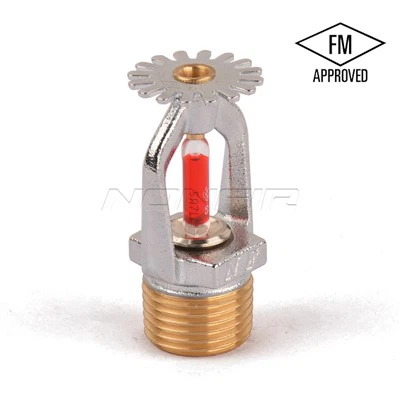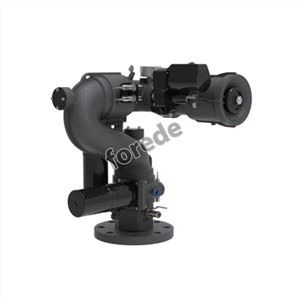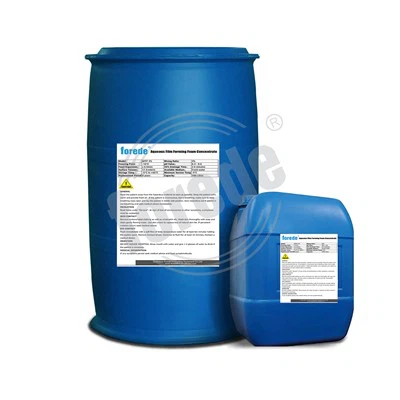What is a Medium Expansion Foam Nozzle?

What is a Medium Expansion Foam Nozzle?
Medium Expansion Foam Nozzle (MEF Nozzle) is a specialized firefighting appliance designed to generate fire-suppressing foam by mechanically aspirating air into a stream of foam solution (a mixture of water and foam concentrate). Its core function is to produce foam with an expansion ratio typically falling between 20:1 and 200:1. This means for every 1 unit volume of foam solution entering the nozzle, it outputs between 20 and 200 unit volumes of finished foam. Physically, MEF nozzles often resemble modified fog nozzles but incorporate critical design features like an aspirating chamber (sometimes a cage-like structure at the tip) or specific internal baffling. As the pressurized foam solution passes through this chamber, it creates a venturi effect or turbulence that draws in and intimately mixes large quantities of ambient air. This process forms bubbles, creating the characteristic medium expansion foam. This foam is less fluid than low-expansion foam but significantly more so than the stiff, dry blocks of high-expansion foam, striking a unique balance crucial for its tactical applications.
The fundamental purpose of an MEF Nozzle is to generate medium expansion foam for effective fire control, extinguishment, vapor suppression, and exposure protection. This foam achieves fire suppression through several key mechanisms simultaneously:
Smothering/Blanketing: The foam forms a cohesive, continuous blanket that rapidly covers the fuel surface, separating it from atmospheric oxygen essential for combustion.
Cooling: The water content within the foam bubbles absorbs significant heat energy from the fuel surface and flames, reducing the fuel's temperature below its vaporization or pyrolysis point.
Vapor Suppression: By forming a stable, unbroken blanket, the foam prevents the release of flammable vapors from the fuel surface. This is critical for preventing fire spread, flashbacks, and mitigating explosion hazards during spill control or overhaul.
Barrier Formation: The foam adheres relatively well to surfaces, including vertical ones, creating a protective layer that shields exposed fuels or structures from radiant heat and prevents re-ignition of extinguished areas. Medium expansion foam is particularly valued for its ability to flow across surfaces, fill irregular spaces and voids, and maintain integrity better than low-expansion foam in certain scenarios, while being less susceptible to disruption by wind or minor drafts than high-expansion foam.
MEF Nozzles excel in scenarios requiring foam that can flow and fill spaces effectively but doesn't need the extreme volume or fragility of high-expansion foam:
Confined/Enclosed Spaces: Basements, ship holds, storage lockers, mine tunnels, electrical cable ducts, transformer vaults (where water damage is a concern), and aircraft hangars (sub-surface application). The foam can fill these volumes, displacing air/smoke and suppressing fire deep within.
Flammable Liquid Fires (Class B): Especially effective in diked areas, bunds, trenches, or spills on open ground where foam needs to flow across the surface, form a cohesive blanket, and suppress vapors. Ideal for polar solvents requiring alcohol-resistant concentrates when used with AR-AFFF or AR-FFF.
Sub-surface Injection: A primary strength. MEF foam can be injected directly below the surface of burning flammable liquids in storage tanks or containers, rising through the fuel to smother the fire with minimal fuel disturbance or frothing over.
Hazardous Material (HazMat) Spills: Creating a durable vapor-suppressing blanket over spilled volatile chemicals to reduce evaporation and fire/toxicity risks during containment and cleanup.
Deep-Seated Class A Fires: Fires involving bulk solid combustibles like coal, rubber tires, rubbish piles, or rolled paper where foam can penetrate crevices, smother hidden fire, and provide prolonged cooling.
Exposure Protection: Applying foam blankets to protect structures or equipment adjacent to a fire.
The defined medium expansion range (20:1 to 200:1) is not arbitrary; it directly determines the foam's physical properties and tactical advantages:
Fluidity vs. Stability: This range produces foam fluid enough to flow readily across flat surfaces, into trenches, and around obstacles (unlike stiffer high-expansion foam), yet stable enough to form a cohesive, heat-resistant blanket that doesn't collapse instantly or drain its water content too quickly (unlike very low-expansion foam). It finds the optimal balance.
Penetration & Coverage: MEF foam penetrates cavities and fills complex, irregular spaces (like machinery, collapsed structures, or piled goods) much more effectively than low-expansion foam. Its volume provides excellent coverage per gallon of solution, making it resource-efficient for large spills or spaces.
Sub-surface Capability: The density and fluidity of MEF foam allow it to be injected under the surface of burning liquids. It rises through the fuel, creating a cooling and smothering layer directly at the fuel interface without excessive agitation that could spread the fire. Low-expansion foam typically floats on top, while high-expansion foam is too light for sub-surface use.
Wind/Disruption Resistance: MEF foam has sufficient mass and bubble structure cohesion to withstand mild wind and air currents better than high-expansion foam, making it more practical for outdoor use and in ventilated compartments.
Drainage Rate: The drainage rate (release of extinguishing solution from the foam bubbles) is optimized – fast enough to provide cooling and vapor sealing on the fuel surface quickly, but slow enough to maintain blanket integrity for sustained protection.
Water & Concentrate Efficiency: Generates large volumes of effective foam from relatively small amounts of water and foam concentrate, conserving critical resources.
Rapid Deployment & Maneuverability: Often designed as portable, handline nozzles or monitor attachments, allowing firefighters to deploy and reposition foam streams quickly compared to bulky fixed high-expansion generators.
Versatility: Highly effective across a broad spectrum of fire scenarios, including challenging Class B liquid fires (especially sub-surface), deep-seated Class A fires, and confined space incidents.
Superior Vapor Suppression & Reignition Prevention: Creates a durable, adherent blanket that significantly reduces flammable vapor release and provides excellent protection against reignition during overhaul.
Reduced Water Damage: Minimizes water usage and subsequent collateral damage compared to water-only application, vital in sensitive environments (electronics, archives, museums).
Effective in Confined Spaces: Ability to fill volumes and displace smoke/heat gases.
Limitations:
Wind Sensitivity: While better than high-expansion foam, strong winds (>15-20 mph) can still disrupt the foam blanket before it settles, reducing effectiveness outdoors.
Training & Skill Required: Requires proper training on foam concentrate proportioning, nozzle operation (correct pressure, technique), and application tactics for different scenarios.
Concentrate Logistics: Reliance on specific foam concentrates (especially AR types for polar solvents) necessitates adequate supply and correct selection/mixing.
Limited Reach/Throw: The foam stream generally has less reach and penetration force than a low-expansion fog or solid stream, requiring firefighters to get closer to the fire or fuel.
Surface Contamination: Foam residues can be slippery and require cleanup; some concentrates may have environmental implications.
As a leading company in firefighting field,FOREDE has a wide product range including Fire Nozzle&Monitors, Fire Sprinkler Systems, Foam Systems, Fire Hydrant Systems,Fire Truck Accessories.etc.
Our address
Nan'an City, Quanzhou City Fujian PRC-China
Phone Number





















